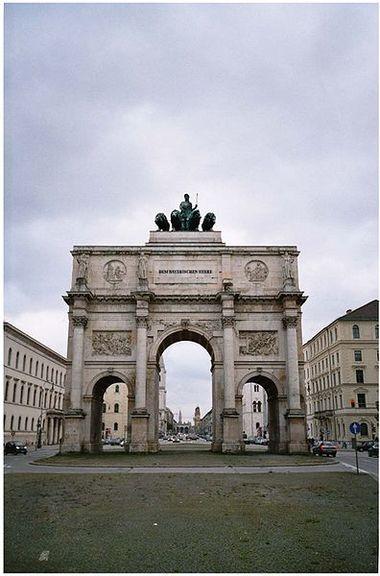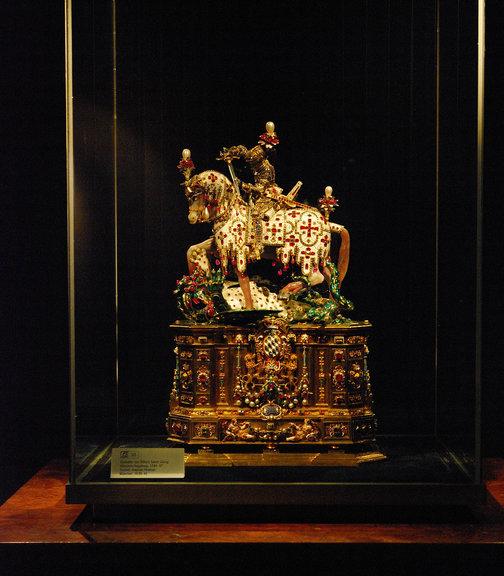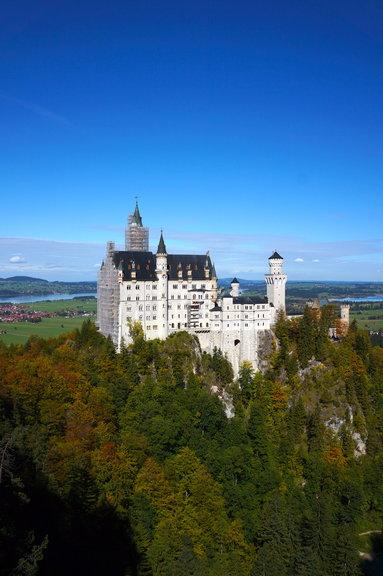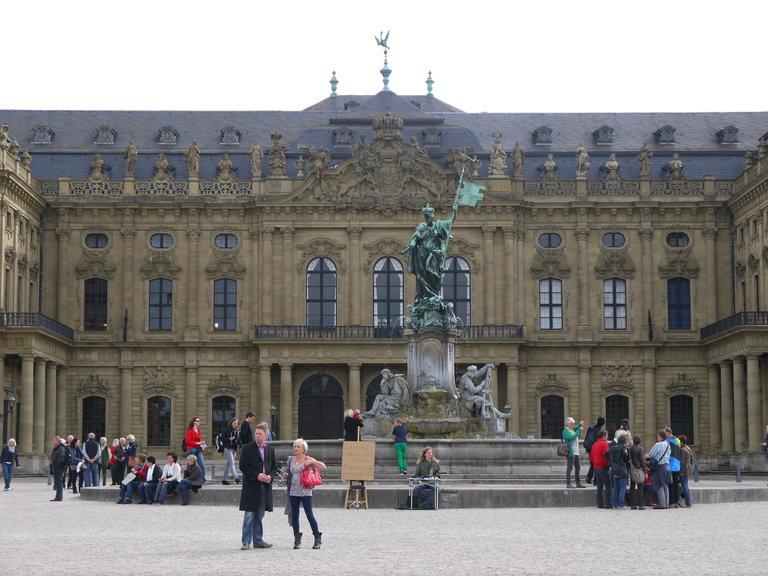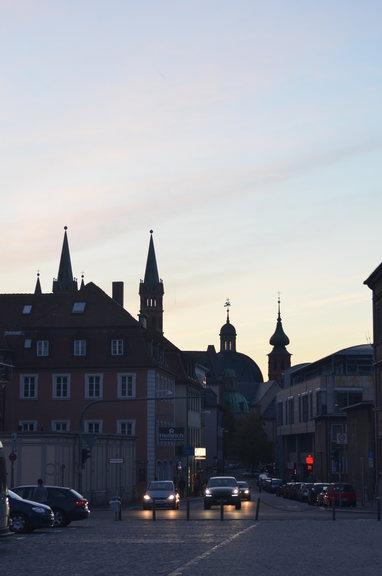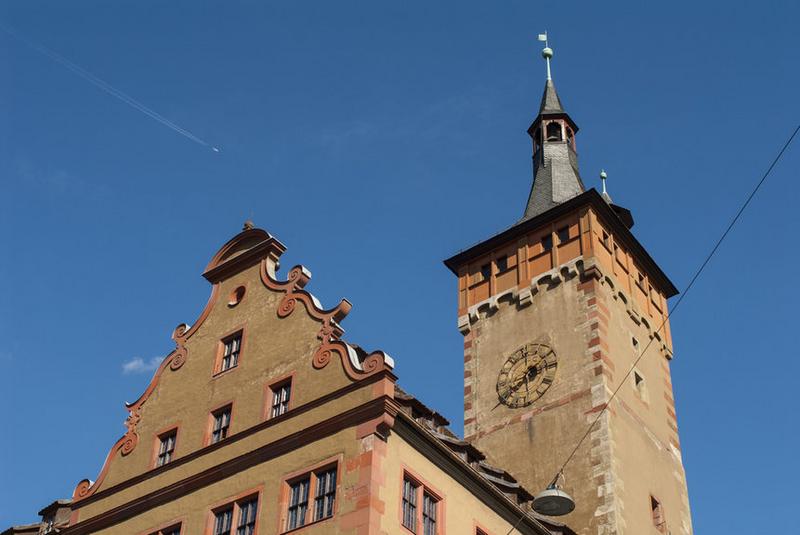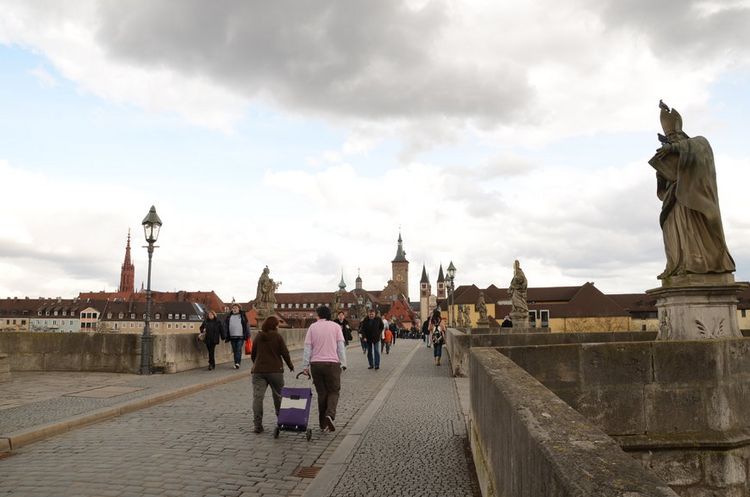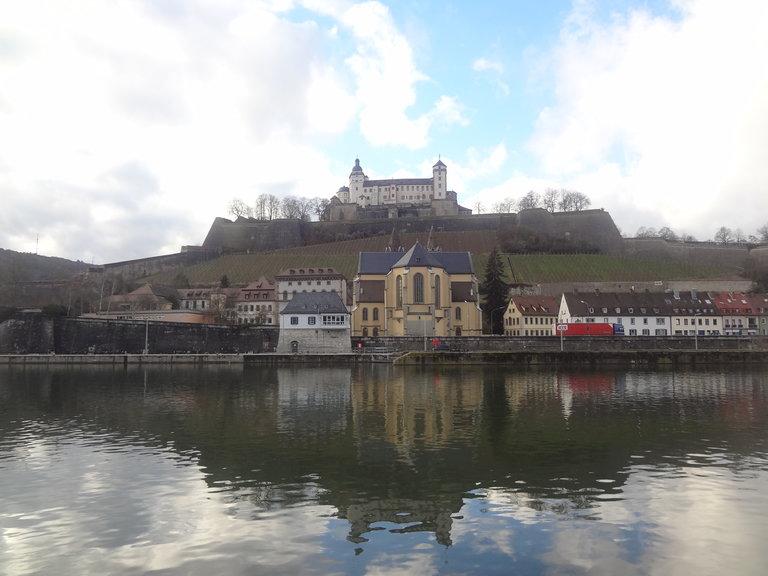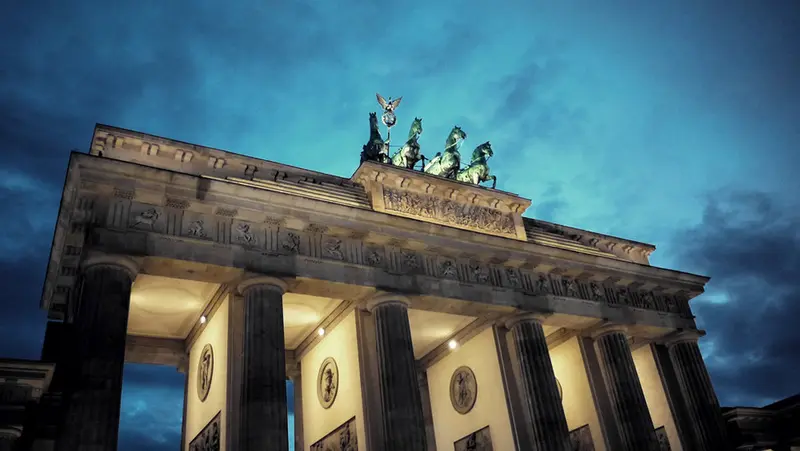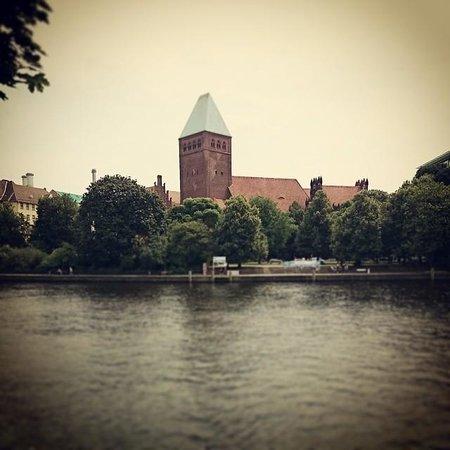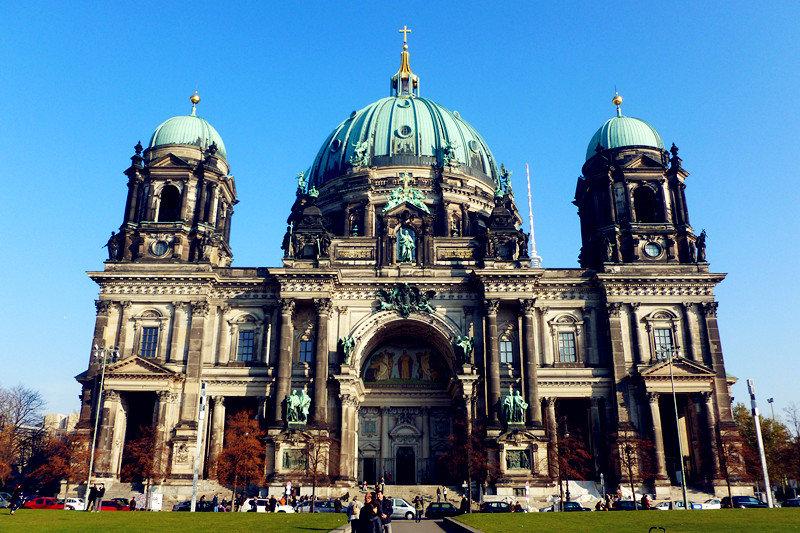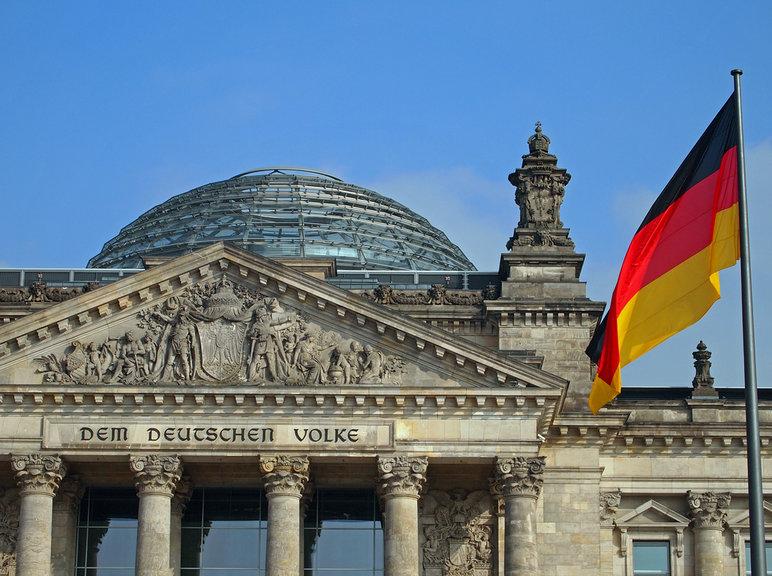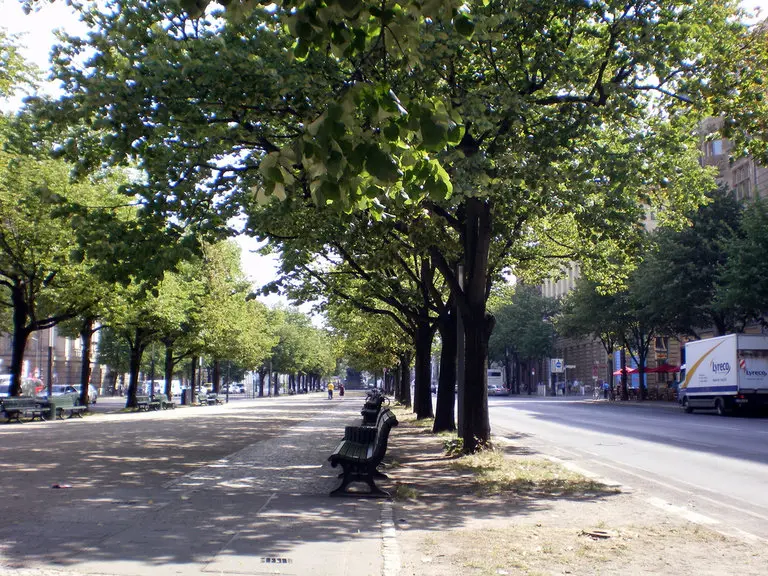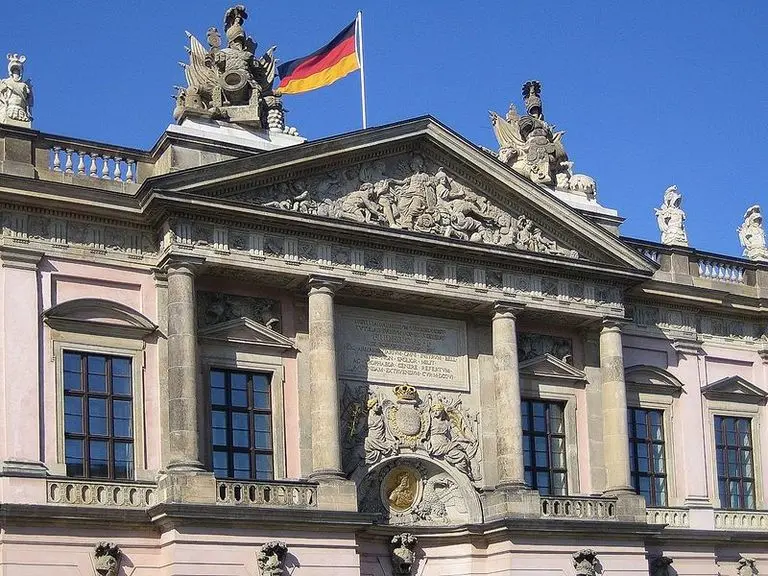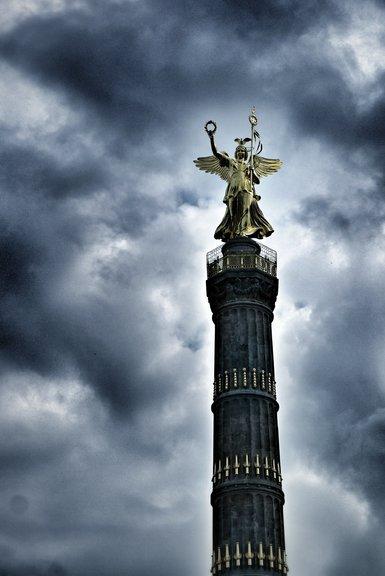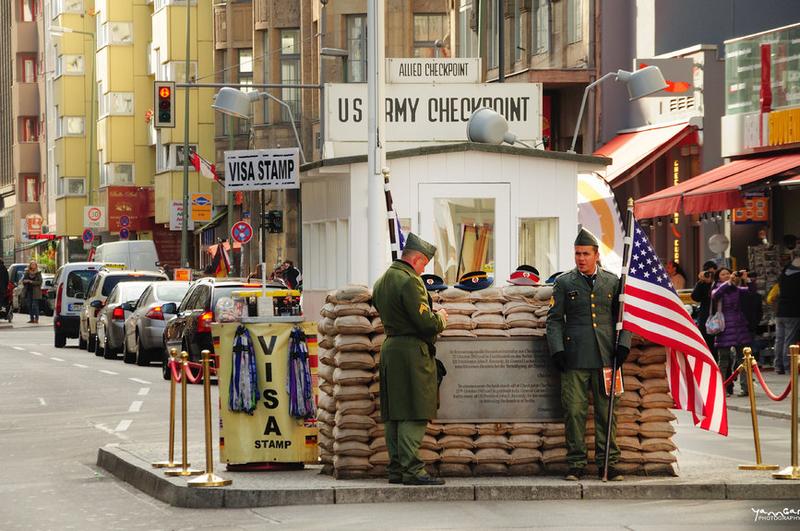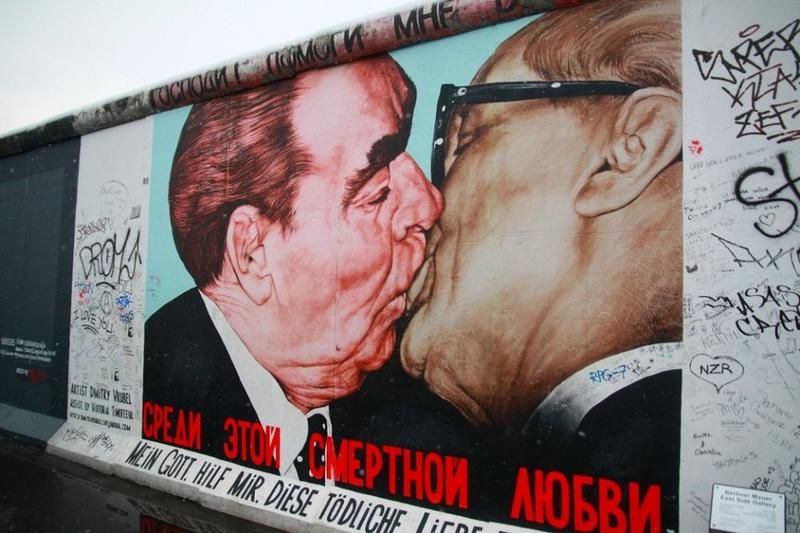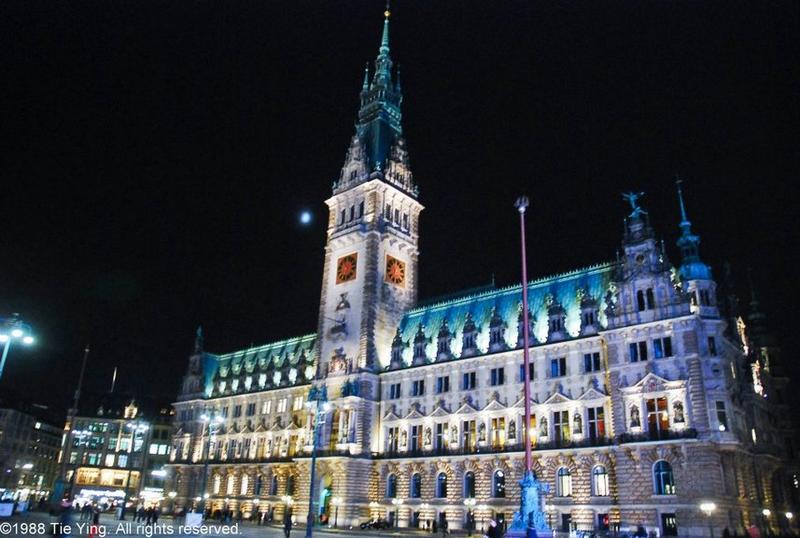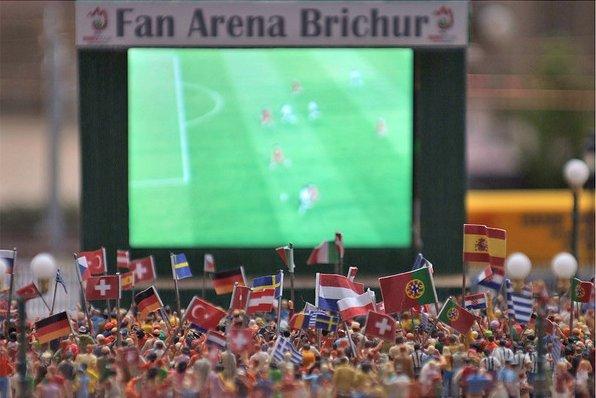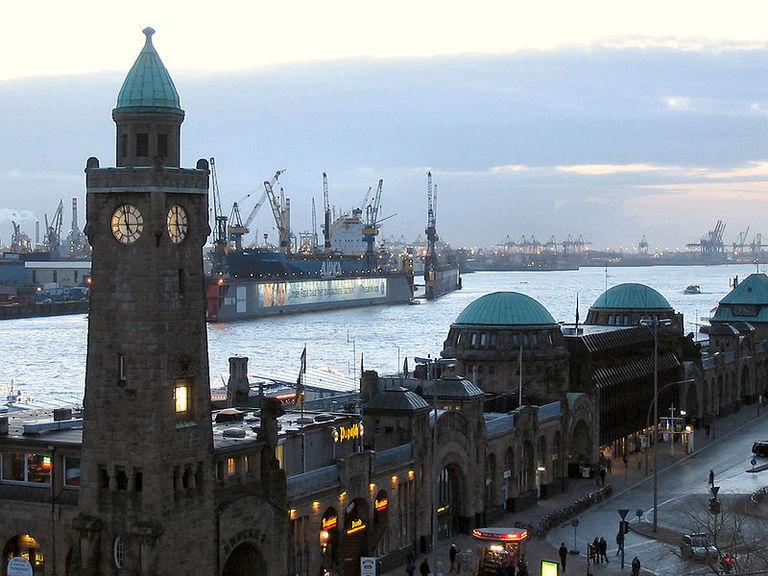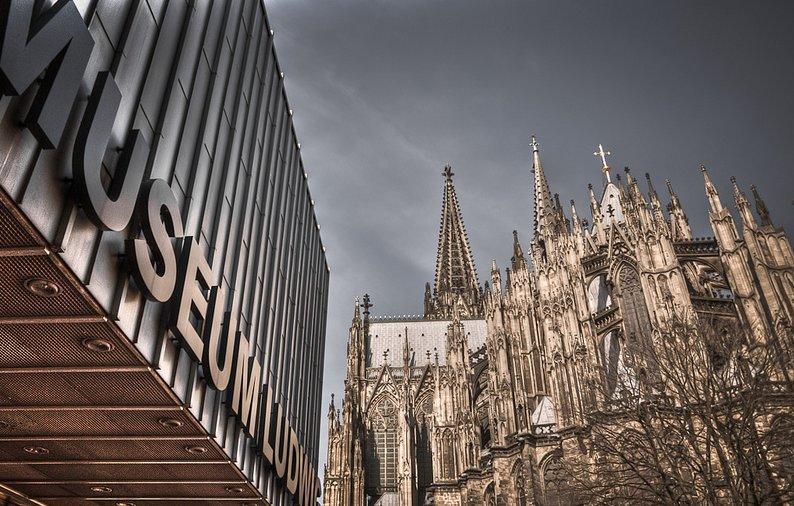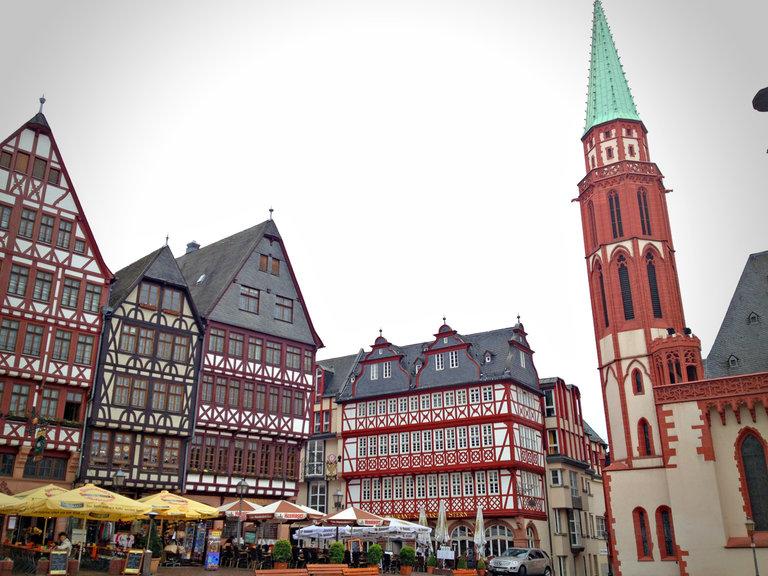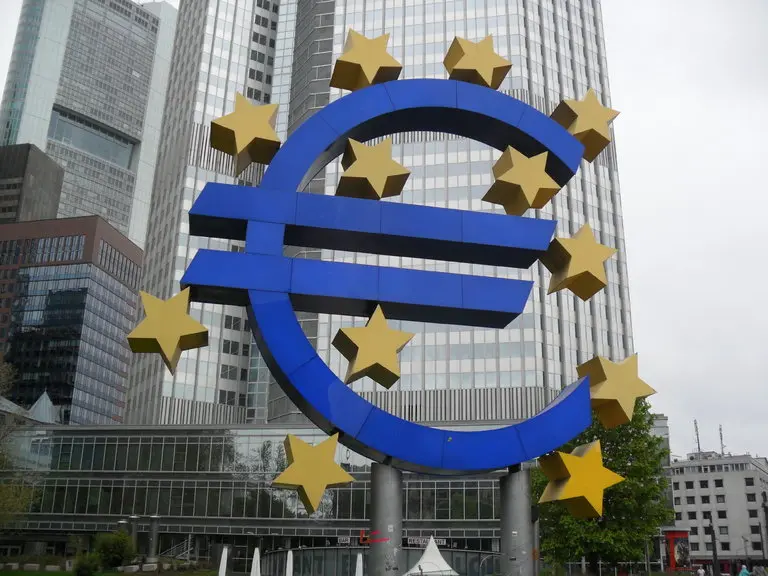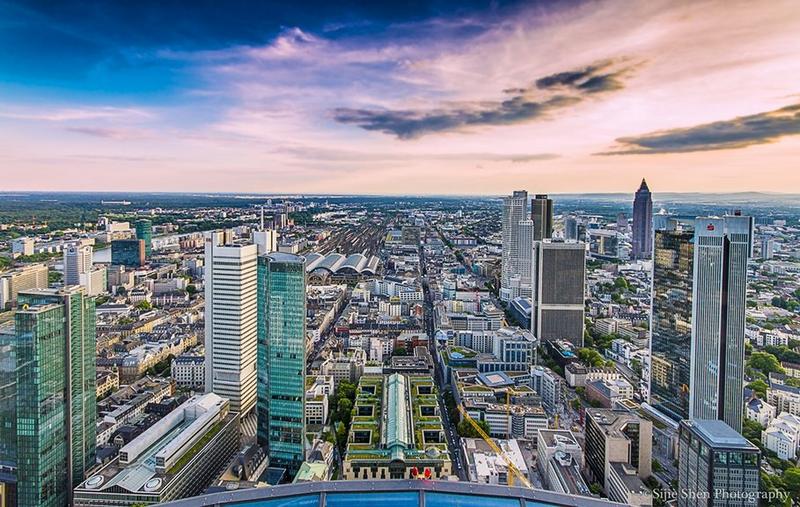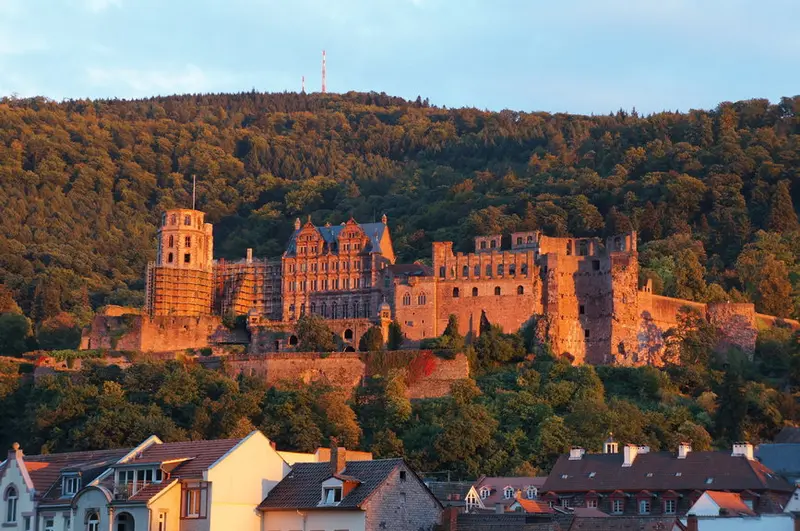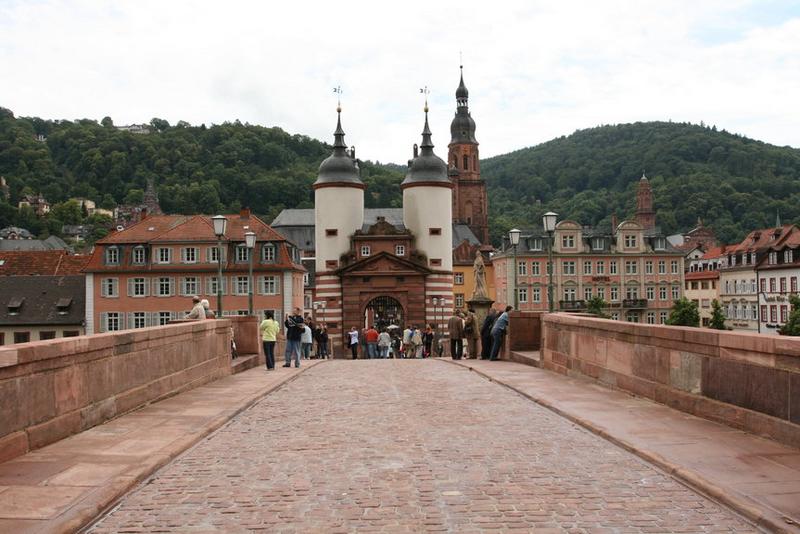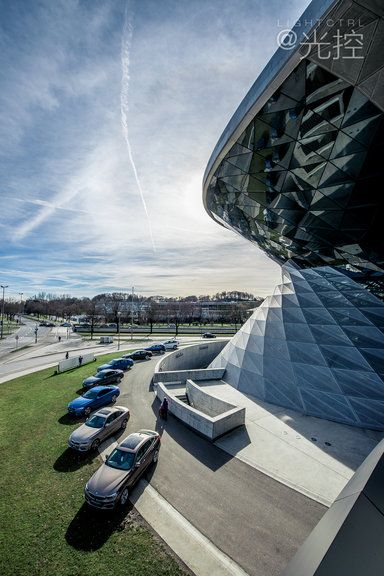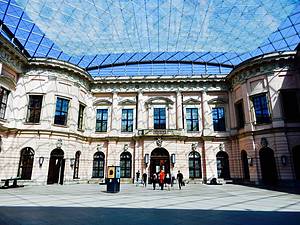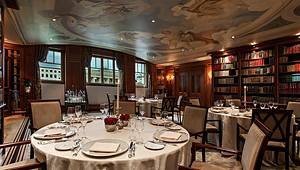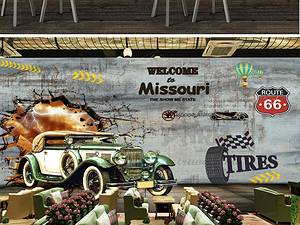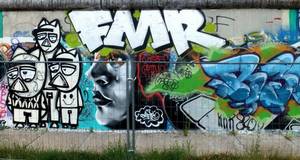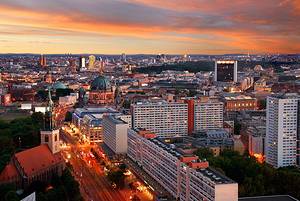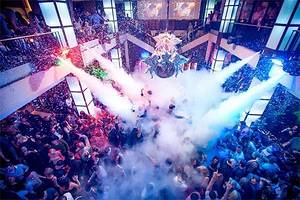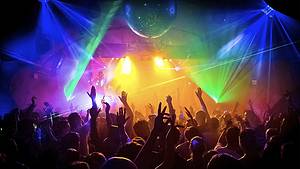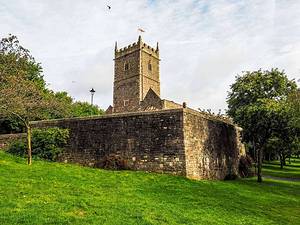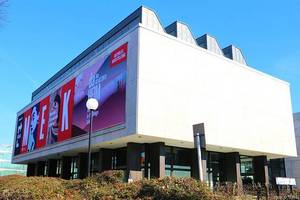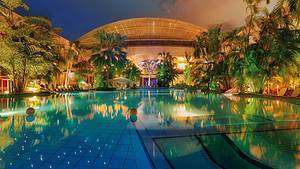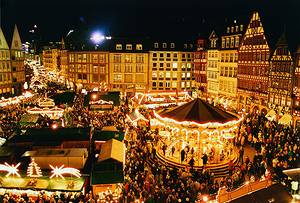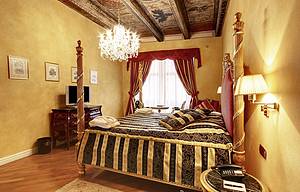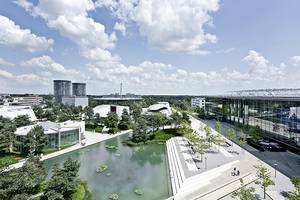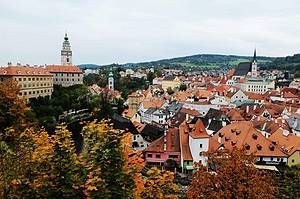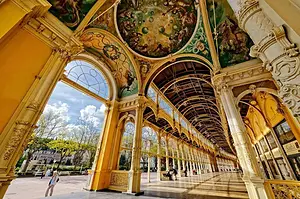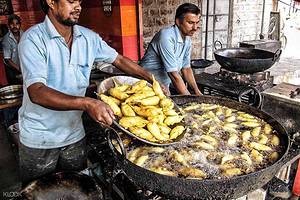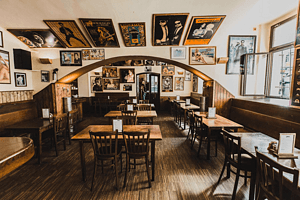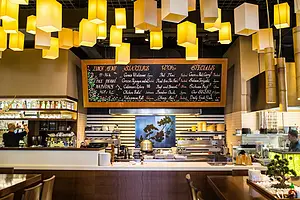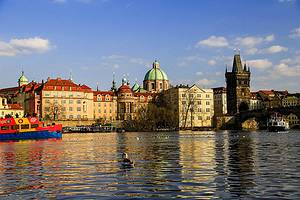I go to Germany only once in my lifetime. I will definitely choose this route
8 cities |
42 attraction(s) |
total distance 71
km
 TIPS
TIPS
Day1
Day2
Day3
Day4
Day5
Day6
Day7
Day8
Day9
Day10
Day1: Munich
6 attraction(s) ·
21 km
1
Nymphenburg Palace is located in the west of Munich and was built in 1675. In celebration of the birth of their son in 1644, the royal couple Ferdinand Maria and his wife ordered the construction of this summer palace in the western outskirts of Munich. After more than 300 years of development, the original ornamental garden has been expanded into a luxurious palace, which includes baroque gardens, meandering water channels, and scattered pavilions. Walking through it is a delightful experience and highly recommended. The main building of the palace is grand and magnificent, with symmetrical auxiliary buildings on both sides and distinct levels. In addition to Nymphenburg Palace, there are three other palaces in the Nymphenburg Park: Amalienburg Palace, Bath House, and Pagodenburg Palace.
11
km
2
The Munich Triumphal Arch is 21 meters high, 24 meters wide, and 12 meters thick. Its style is similar to the Arch of Constantine in Rome, the Marble Arch in London, the Arc de Triomphe in Paris, and the Brandenburg Gate in Berlin. The arch was built by King Ludwig I of Bavaria and completed in 1852. It is topped with a double chariot and lions. Lions were used because they are the symbol of the Wittelsbach dynasty, which ruled Bavaria. Originally, the arch was built to commemorate the glory of the Bavarian army, but today it serves as a monument to peace. The arch was severely damaged in World War II, but like the Kaiser Wilhelm Memorial Church in Berlin, it was partially reconstructed. The inscription on the back reads, "Dedicated to victory, destroyed by war, reminds of peace."
3
km
3
Karlsplatz is a large square in the heart of Munich, Germany. It was built in 1797 and named after the unpopular Bavarian Elector Karl Theodor. The name Stachus, on the other hand, is derived from the tavern "Beim Stachus," which used to be located there.
The most important buildings on the square are the Karlstor, the western gate of the demolished medieval castle, and the neo-baroque Justice Palace. In summer, there is a large fountain in front of the Karlstor, and in winter, it becomes an open-air ice rink. There is also a large shopping center underground. Between Karlsplatz and Marienplatz, there is the main pedestrian area of the city (Neuhauser Strasse, Kaufinger Strasse), with countless shops and restaurants.
The subway and suburban trains have stations underground at the square. Karlsplatz is also a hub for the Altstadtring tram system, which circles around the old city.
4
km
4
The New Town Hall in Munich was built in three stages, from 1867 to 1904. The clock tower on the west side of the New Town Hall is also one of Munich's most iconic buildings. It is the highest point within the old town ring road, except for the Church of Our Lady. The "Glockenspiel" on the clock tower is Europe's fourth largest puppet dance, well-known and highly regarded. Every day at 11 am, 12 pm, and 5 pm, and from May to October at 5 pm and 9 pm, the colorful figurines on the upper part of the clock perform a scene of knightly contest, while the lower part features a dance of the coopers. It's a beautiful sight and not to be missed if you have the chance.
2
km
5
It is the center of Munich and therefore a must-visit place for travelers. Before 1807, Marienplatz had a market, and most of the buildings around the square were built between the 19th and 20th centuries. In the center of the square stands a Marian column, expressing people's gratitude and devotion to Virgin Mary. In the northeast corner of the square, there used to be a fish fountain, where butcher apprentices held their graduation ceremonies. Marienplatz Church is located in the northwest, the New Town Hall is on the north side of Marienplatz, and the Old Town Hall is on the east side of the square. Viktualienmarkt is located in the southeast of the square.
3
km
6
The Royal Palace Museum displays a large number of exquisite items and treasures, including a mobile altar, Queen of Hungary's gold cross, cup carved from bloodstone, and handicrafts from Turkey, Iran, Mexico, and India.
Day2: Fussen
3 attraction(s) ·
2 km
1
Neuschwanstein Castle has undoubtedly become a symbol of German tourism, it is the most famous and visited castle in Germany. Located on a hill in the southern border of Germany, in the Alps, this masterpiece of King Ludwig II has a fairytale-like appearance and scenery. The interior of Neuschwanstein Castle is also very luxurious, but it cannot hide the tragic fate of King Ludwig II. Legend has it that King Ludwig II developed a strong interest in knight legends and decided to recreate these scenes in his own castle after visiting Wartburg Castle in Thuringia. The construction of Neuschwanstein Castle began in 1869, and when King Ludwig II passed away 17 years later, only the exterior facade had just been completed. Three months after his death, the government opened it as a museum. Currently, parts of the castle's interior, including the Throne Hall, King's Bedroom, Living Room, Dressing Room, and Great Hall, are open to visitors, with a visit time of about 30 minutes. There is also the Marienbrücke (Mary's Bridge) built over the ravine behind Neuschwanstein Castle, where you can enjoy a panoramic view of the castle.
Neuschwanstein Castle is located near the town of Füssen. If you want to stay overnight in the area, Füssen is a good choice. It is also a historic medieval town.
1
km
2
The Marienbrücke connects the two mountains to the south of Neuschwanstein Castle, spanning the valley and waterfall. It is the best location to shoot the iconic profile of Neuschwanstein Castle.
2
km
3
Neuschwanstein Castle, also known as the Old Swan Castle or Hohenschwangau Castle, is a castle located in Hohenschwangau village, under the jurisdiction of Schwangau town in the state of Bavaria, Germany. Built in 1836, it was where Ludwig II spent his childhood.
Day3: Wuerzburg
5 attraction(s) ·
7 km
1
The most eye-catching building in the city center that attracts tourists is the Residenz, one of the most outstanding examples of late Baroque architecture in Germany. It is one of the largest and most magnificent Baroque royal palaces in Germany, consisting of the palace, gardens, and square. The palace was designed and built in collaboration by baroque architecture experts Balthasar Neumann and Maximilian von Welsch in 1719. The palace is not only representative of the residence of the Würzburg prince-bishops, but also a pinnacle of European feudal monarchy. The Würzburg Residence is the residence of the ruling princes and bishops of Würzburg, commissioned in 1720 and took 60 years to complete. Its exterior is elegant, with luxurious Baroque decorations in its interior. Particularly notable is the ceiling of the grand staircase, which features the largest trompe-l'oeil fresco in the world, painted by artist Tiepolo and depicting the four continents known at that time - Europe, Africa, America, and Asia. Additionally, there are beautiful rooms such as the White Hall, Imperial Hall, and Mirror Cabinet. However, it is worth noting that the Würzburg Residence was heavily damaged during World War II, and what is seen today is the result of post-war restoration. The Würzburg Residence is located in the southeastern part of the old town, and outside the residence, visitors can also freely visit the splendid Hofkirche and elegant Hofgarten.
2
km
2
This Romanesque church, facing the old bridge over the Main River, is one of the oldest and most beautiful churches in Wurzburg. It was built in 1040 and has been added various influences from Gothic, Renaissance, and Baroque styles throughout the centuries. Today, its two towering red and white brick towers are one of the most iconic sights in the old town. The church itself is over a hundred meters long and very grand. The Schönborn Chapel to the north is the burial site of the Schönborn family, the former palace bishops of Wurzburg, and is decorated uniquely. The Cathedral Museum (Museum am Dom) and the Cathedral Treasure Chamber (Domschatz) are also available for visitation.
3
km
3
The Town Hall building in Würzburg, Germany, includes a more ancient section known as "Grafeneckart". It is situated between the main seat Cathedral and the Old Main Bridge over the Main River. This red-brown building features a 55-meter-high tower and many ancient decorations on its walls. The construction of this building began in 1180, making it over 800 years old. The current operational Town Hall is located behind this old building.
1
km
4
Main River Old Bridge is the most beautiful bridge over the Main River in Würzburg. It is located at the foot of the Marienberg Castle and is a must-pass route from the castle to the old town. The bridge, built in the 15th century, has sculptures of saints and local historical figures. It is now a pedestrian bridge where you can enjoy the magnificent views of Marienberg Castle, vineyards on the hill, clear flowing waters of the Main River, and the beautiful spires of churches in the old town of Würzburg.
4
km
5
On the west bank of the Main River, this castle fortress on Marienberg is the symbol of Würzburg. The castle was built in 1201 by the ruling prince-bishops of Würzburg and has been inhabited by them until the completion of the Würzburg Residence. The medieval-style castle was transformed into a Baroque style in the 17th century, but it still maintains an overall dignified and simple appearance. The interior of the castle is now used as museums that narrate the history of the region and the bishop's family. From the Old Bridge, you can walk along the footpath up to Marienberg Castle, which takes about 30 minutes. From the top of the hill, you can enjoy a panoramic view of Würzburg's red-roofed cityscape. At the foot of Marienberg Castle, there are vast vineyards that showcase the local character. Moreover, the mountain paths leading to the castle are part of the "Wine Hiking Path" on Marienberg.
Day4: Berlin
6 attraction(s) ·
12 km
1
Brandenburg Gate is a symbol of Berlin and also a national symbol of Germany. This neoclassical sandstone building, completed in 1791, is modeled after the Propylaea in Athens. On top of the gate is a copper statue of the winged goddess of victory driving a four-horse chariot. The goddess holds a scepter with an oak wreath, an Iron Cross medal, and a soaring eagle, all symbolizing the victory in war. The Brandenburg Gate faces east, towards the core of the old city of Berlin, and is the only remaining city gate. It has stood here for over two centuries, witnessing the rise and fall of German history. During the period of East-West German division, the Berlin Wall was erected to the west of the Brandenburg Gate, and no one passed through it for decades. The gate and the surrounding Pariser Platz have undergone recent restoration after the end of the Cold War. The buildings on Pariser Platz, including the newly constructed US Embassy and the famous Hotel Adlon where numerous celebrities have stayed, are also of great significance.
4
km
2
This museum is located inside a historic cathedral and showcases the history of the state of Brandenburg, with Berlin as its center.
2
km
3
The Berliner Dom is a Lutheran church in Berlin, Germany, built from 1894 to 1905, and was the dedicated church of the Hohenzollern dynasty of the German Empire. It is located in the eastern part of Museum Island in the city center of Berlin, with lavish interior decorations including intricately designed columns, exquisite murals, and gilded capitals. The building has four levels, reaching a height of 114 meters. Although the Berliner Dom is sometimes mistakenly translated into English as 'Berlin Cathedral', it is not actually a cathedral and does not have a bishop residing in it. Nearby, on Unter den Linden, is the cathedral of the Catholic Archdiocese of Berlin - St. Hedwig's Cathedral.
3
km
4
The Reichstag building, completed in 1894, served as the meeting place of the national parliament during the German Empire and the Weimar Republic. On the evening of February 27, 1933, the infamous Reichstag fire occurred, leading to the Nazi party's control of the parliament and ultimately plunging the country into World War II. During the division of Germany, the restored Reichstag building was located in West Berlin, while the Federal Republic of Germany's parliament had moved to the capital city of Bonn. After the reunification of Germany, the Reichstag building underwent another round of restoration to accommodate its role as the meeting place of the German federal parliament, adding a special glass dome. Since 1999, it has officially become the seat of the German Bundestag. The inscription "DEM DEUTSCHEN VOLKE" on the west gate of the Reichstag building means "For the German people".
3
km
5
This broad avenue, stretching from Brandenburg Gate in the west to Museum Island in the east, about 1.5 km long, is one of the most charming roads in Berlin. There are many famous buildings on both sides of the street. The western end is the embassy district, with the most prominent being the Russian Embassy, built with white marble. In the middle section, there are many interesting shops. In the eastern section, to the south, there is Bebelplatz, the site of the Nazi book burning incident in 1933, with a glass-covered underground bookshelf sculpture in the center to commemorate the event. On the west side of the square is the Old Royal Library of Humboldt University, and on the southeast side is St. Hedwig's Cathedral, and on the east side is the Berlin State Opera. In the north, going east along the street, there are the Old National Library, the main building of Humboldt University, the New Guardhouse, and the German Historical Museum. Among them, the site of the New Guardhouse was originally a guardhouse during the Prussian era, and now houses a bronze statue of "Mother with Dead Son" to commemorate the soldiers who died in World War I. In the middle of the street outside Humboldt University is the equestrian statue of Frederick the Great.
1
km
6
The Bebelplatz is located in the middle section of Unter den Linden, about 150 meters south along Charlottenstraße. It is considered the most beautiful square in Berlin. The square has been planned since 1688 and has been rebuilt several times due to war. In the center of the square is the neoclassical Konzerthaus Berlin, and on either side are two very similar churches. The northern one is the French Cathedral (Französischer Dom), built in 1705 by Huguenots who fled to Berlin from France due to persecution. The southern one is the German Cathedral (Deutscher Dom), which houses some exhibitions on German history.
Day5: Berlin
6 attraction(s) ·
15 km
1
The German Historical Museum (Deutsches Historisches Museum, DHM) was established in 1987 by German Chancellor Helmut Kohl and Berlin Mayor Eberhard Diepgen on the occasion of the 750th anniversary of the founding of Berlin. It is located in the oldest building on Unter den Linden street in central Berlin, the former Berlin Arsenal. In 2004, the museum's new wing, designed by I.M. Pei, was completed. In 2006, after the restoration of the Arsenal building, the permanent exhibition on the theme of "Images and Testimonies of Two Thousand Years of German History" was opened to the public.
3
km
2
Berlin Wall was built on August 12, 1961, and fell on November 9, 1989. It was 176.8 kilometers long. For nearly forty years, this wall, known as the "anti-fascist protection wall" by the East German government at that time, divided Berlin into two parts. Most of the Berlin Wall has been demolished, except for this memorial park that showcases the original structure of the Berlin Wall and its history.
There are three main sections of the Berlin Wall remaining, apart from the famous East Side Gallery. One is located about 200 meters west of Checkpoint Charlie on Niederkirchnerstraße, and the other is on Bernauerstraße near Nordbahnhof. The latter two sections of the Berlin Wall are grayish-white in color, and graffiti can only be seen on the side facing West Berlin, reflecting the historical appearance. The graffiti on the East Side Gallery is the work of contemporary artists. The most famous one is "My God, Help Me to Survive This Deadly Love," taken from a real political news photo on October 7, 1979. It depicts the embrace and kiss between the then-Soviet leader Leonid Brezhnev and the East German leader during the celebration of the 30th anniversary of the founding of East Germany. Therefore, this image is also known as the "Brotherly Kiss" (Bruderkuß).
Today, there are occasional small holes on the remaining parts of the Berlin Wall, left by citizens as a commemoration when the wall was being demolished. Various fragments of the Berlin Wall are sold in souvenir shops throughout the streets and alleys of Berlin, with prices varying based on their size. The smallest fragments are embedded in specially made postcards. However, it is difficult to determine the authenticity of these fragments, as only a very few claim to have numbered certificates. After 20 years, even with more fragments, they are gradually being lost in time.
5
km
3
The Victory Column is located 2 kilometers west of Brandenburg Gate. It was built in 1873 to celebrate the victory in the Danish-Prussian War. At the top of the column is a gilded bronze statue of the goddess Victoria. The Victory Column is in the center of Tiergarten park, standing at 69 meters tall, offering a panoramic view of the city from its top. The surrounding Tiergarten park is the largest green lung in the center of Berlin. Nearby, there are attractions such as the Federal Presidential Palace at Bellevue Palace and the Haus der Kulturen der Welt. Additionally, the Victory Column serves as the site for New Year's fireworks and the famous Gay Pride Parade.
3
km
4
From a slightly higher area, the memorial built on the notorious former site of the Nazi propaganda ministry resembles a wave composed of coffins. This monument was not built for the surviving Jews, but for the Germans, for their collective memory, demonstrating the courage of the Germans to confront history, as well as evoking a silent oppression and shock. It is a vast field of concrete pillars. A total of 2,711 cubic concrete columns are arranged in a grid pattern on this open land, unevenly distributed due to the undulating terrain and varying heights. At first glance, it is only blocks of gray and white. Designed by Jewish architect Peter Eisenman, this memorial, completed and opened in 2005, aims to commemorate the countless innocent Jewish souls who died in World War II. The design of the memorial is symbolic, representing a pre-existing order moved away from humanity due to human factors. But you can also disregard these established explanations and simply feel the restlessness and unease in the cold, hard concrete forest. The memorial is just south of Brandenburg Gate, only a hundred meters away, and very close to the German Bundestag. In such a central location, housing such a vast and permanent memorial for victims, it is clear to see the sincerity and profound reflection on war in Germany.
2
km
5
Checkpoint Charlie, located on the former Berlin Wall, was one of eight checkpoints along the dividing line between the two countries that controlled the city. It has been partially rebuilt and preserved since the end of the Cold War, primarily as a symbol of the American military presence. Today, it serves as a tourist hotspot where visitors can reflect on the history of the past twenty years. If you want to learn more about the checkpoint, the Berlin Wall, and the period of German division, you can visit the Checkpoint Charlie Museum (Haus am Checkpoint Charlie), also known as the Berlin Wall Museum (Mauermuseum). The museum tells the stories of ordinary people who attempted to escape from East Berlin to West Berlin, filled with dark humor. In honor of those who lost their lives, there is a memorial with 191 crosses near the Reichstag building, bearing the names and birth-death dates of the victims, the last of whom died nine months before the Berlin Wall was demolished.
5
km
6
This is the longest and most famous preserved section of the Berlin Wall in Berlin, measuring a total of 1.3 kilometers. The Berlin Wall was demolished in 1990 after the reunification of East and West Germany. This remaining section of the Berlin Wall has become a paradise for contemporary artists, with political themes being predominant, and it underwent renovations in 2009. This section of the Berlin Wall is the most visited among the three remaining sections. Nowadays, the narrow lawn between this wall and the Spree River is transformed into a beach for sunbathing during the summer, and the once heavily guarded area is now gone.
Day6: Hamburg
3 attraction(s) ·
4 km
1
Hamburg City Hall is the municipal building of Hamburg, Germany. It is located in the city's old town area with the City Hall Square in front of it and the Hamburg Stock Exchange at the back. The main shopping street, Mönckebergstraße, connects the City Hall to Hamburg Central Station. St. Peter's Church is a nearby landmark. The architectural style of the building is neo-Renaissance, making it one of the few well-preserved historic buildings in Hamburg. The City Hall was built during a period of wealth and prosperity, symbolizing Hamburg's wealth, the autonomy of Hamburg state, and the republican tradition.
The City Hall has been the central stage for many historical events in Hamburg. On May 3, 1945, Nazi commanders surrendered to the British army here.
2
km
2
A miniature world located within the warehouse city, it is the world's largest model railway scene and is currently still under construction. Covering an area of 1,300 square meters, it controls 930 simulated railway lines in a 1:87 scale, covering almost all train routes around the world. Last year, the miniature world celebrated its 10th anniversary and received a total of 10 million visitors. In the 8 completed rooms, visitors shuttle between them through a long corridor. Each room is approximately 100 to 300 square meters and has its own theme, such as Austria and the United States named after countries, the Swiss Alps and Scandinavian scenery named after landscapes, and the Hartz Mountain high-speed railway terrace and the airport control system of the fictional city "Knuffingen" named after advanced transportation systems.
2
km
3
The Hamburg Port, also known as Hafen City, is located on the banks of the River Elbe, near the North Sea. It is Germany's largest port and serves as the gateway of Germany to the world. It is not only an important project for the city's municipal development but also a famous travel destination in Hamburg. Visitors can see various types of ships along the banks of the River Elbe (if lucky, there might be famous cruise ships docking for tourists to board and explore), enjoy delicious snacks, and visit the aquarium and the famous Hamburg Fish Market.
Day7: Cologne
4 attraction(s) ·
3 km
1
Cologne Cathedral is a landmark Catholic church located in the city center of Cologne. It is a masterpiece of medieval European Gothic architecture and is renowned as one of the most perfect Gothic cathedrals in the world. It took over 600 years to complete and attracts millions of visitors every year. The cathedral features the largest altar in medieval German churches and priceless stained glass windows depicting biblical stories. The cathedral's platform offers a impressive panoramic view of the city and the Rhine River. The square in front of the cathedral is a lively gathering place for celebrations and activities.
1
km
2
Ludwig Museum is a modern-style building with a jagged roof, which contrasts sharply with the adjacent cathedral and train station. Built in 1976, this museum has been donated 774 works by Pablo Picasso by the famous German art patron Peter Ludwig and his wife. It is the museum with the largest collection of Picasso's works, other than the Picasso museums in Paris and Barcelona. It also collects a large number of modern art works, including works by Dali, Lichtenstein, and Warhol. The museum also has a photography museum called Agfa-Foto-Historama, which collects photographic works from the past half century and is the largest museum of historical photos and cameras in the world. It is a great place for photography enthusiasts.
1
km
3
Cologne Cathedral is a 5-minute walk southeast from here. It has been a bustling center from Roman times to the present day. The square is the former site of a market and still retains many Renaissance-era buildings. Today, bars, restaurants, and commercial streets are still thriving.
In the middle of the square, don't miss the statue of Wilhelm Jan von Werth, a legendary figure who went from being a poor farmer to a cavalry general. Underneath the sculpture, there are scenes depicting his legendary stories from the battlefield.
On the west side of the square is the tower of the City Hall. Built in the 14th century, Cologne City Hall is a complex structure that was heavily damaged during World War II. Only parts of the historic City Hall were rebuilt, and it was restored in a modern style. The City Hall tower, which is 61 meters high, now has 124 statues, ranging from Jesus and his disciples to Roman generals, as well as modern politicians and musicians. The Renaissance-style porch of the City Hall was built in the mid-16th century, and behind the porch is the oldest preserved part of the City Hall, the Hansesaal (1360), which contains wooden sculptures from the 14th and 15th centuries and is highly worth seeing.
2
km
4
Hohenzollern Bridge is the oldest bridge in Cologne, built between 1907 and 1911, consisting of three railway bridges and a pedestrian walkway. Connecting the cathedral and spanning the Rhine River, Hohenzollern Bridge undoubtedly offers the most beautiful scenery. People in Cologne believe that hanging a lock on Hohenzollern Bridge and throwing the key into the Rhine River can make love last forever. The colorful variety of copper locks on this bridge forms a unique attraction.
Day8: Frankfurt
4 attraction(s) ·
3 km
1
Frankfurter Romer
The Roman Square is the town hall square in Frankfurt since the Middle Ages. Located in the center of the old town of Frankfurt, north of the Main River bridge, the west side is the town hall, the southwest side is the Weitheim residence, a beautiful residential building in the late Renaissance style (1600). The south side is the St. Nicholas Church built in the 13th century, made of red sandstone. The east side is the half-timbered houses built between the 15th and 18th centuries. The north side is a stone house built in the style of an Italian palace (1464). In the center of the square stands the Justice Fountain, built in 1543. The Frankfurt Cathedral, the birthplace of the city, is just 200 meters to the east. In 1944, the square was heavily bombed by the British Air Force and was almost completely destroyed, but was rebuilt after the war.
1
km
2
This is one of the most famous churches in Frankfurt, built for St. Bartholomew in 1239 and became the official site of coronation for the Holy Roman Emperors in 1365. Ten emperors were crowned here between 1562 and 1792. A major fire in August 14, 1867, almost destroyed the entire church, which was then rebuilt in neo-Gothic style. However, it was heavily damaged again during World War II, and the current building was constructed in 1950-1953.
In summer, you can buy an ice cream cone, sit on the square in front of the church, and enjoy the slow-paced life in Europe.
2
km
3
European Central Bank (Eurotower)
The European Central Bank (ECB) has three offices in Frankfurt, Germany. The Eurotower is one of them and is often seen on television. It is a symbolic building representing Frankfurt as one of the financial centers in Europe.
1
km
4
This is one of the numerous Skylines of Frankfurt. It opened in 2000 and is 200 meters tall. Visitors can take an elevator up to its observation deck to enjoy a panoramic view of Frankfurt, especially at night, and experience the city atmosphere. Come here and choose your favorite Skyline!
Day9: Heidelberg
4 attraction(s) ·
8 km
1
Heidelberg Castle, built with red sandstone on the blue throne mountain (Königstuhl), overlooks the old town of Heidelberg and the Neckar River at the foot of the mountain. The castle was built in the 13th century and was struck by lightning in 1537 and 1764, and suffered severe damage during the Thirty Years' War and the War of the Grand Alliance, gradually forming its current layout. The biggest highlight inside the castle today is the world's largest wine barrel (Grosses Fass), which is the fourth barrel of similar size repeatedly built inside the castle due to war reasons. The current wine barrel was built in 1751 and can hold a total of 221,726 liters of wine. There is also a so-called "small wine barrel" (Kleines Fass) next to it. Inside the castle, there is also a medical museum displaying pharmacy from centuries ago. In the palace courtyard, there is a red triumphal arch, which, though small in scale, is quite romantic as it was built overnight and given as a 20th birthday gift to Friedrich V's wife in 1615.
3
km
2
The official name of the old bridge is Karl-Theodor Bridge, named after the elector who built this Baroque-style stone bridge in 1788. It is the ninth bridge in this location since ancient Roman times and is the oldest bridge over the Neckar River in the Heidelberg area. Most of the time, the bridge is a pedestrian bridge with a view of the castle. The sculpture at the southern end of the bridge is of Elector Karl Theodor, and the one at the northern end is of the goddess of wisdom (to celebrate the elector's support for art and science). The southern end of the bridge is the bridge gate, and the two 28-meter-high round towers that date back to the 15th century are the oldest part of the old bridge. The bridge gate was originally used to collect "bridge tolls".
3
km
3
Philosopher's Walk, also known as the Path of Philosophers, is a scenic walking path about two kilometers long located on the southern slope of the Holy Mountain (Heiligenberg) north of the Neckar River in Heidelberg. It has been historically favored by professors, scholars, and philosophers for its pleasant scenery and tranquil atmosphere, where they often wander and find inspiration for their thoughts. The path still offers a great view of the old town of Heidelberg across the river. In the middle of the path, there is a small philosopher's garden (Philosophengärtchen) with memorials for the poets Friedrich Hölderlin and Joseph von Eichendorff. The western section of the path is also home to the Physics Research Institute of Heidelberg University. Due to its southern exposure, the Philosopher's Walk receives ample sunlight and is rich in flora and fauna. You can admire the scenery here, contemplate and meditate, and if interested, continue hiking all the way to the mountaintop. Please note that there is only one seasonal kiosk along the Philosopher's Walk, so it's recommended to bring your own drinks and food.
3
km
4
Main Street is the most important street in Heidelberg's old town. It is a pedestrian-only area that stretches from Bismarckplatz in the west to Karlsplatz in the east. This 1.6-kilometer-long pedestrian street is home to the main shopping and dining establishments in the old town and is also one of the longest pedestrian streets in Europe. The route of Main Street is paved with oval cobblestones and is narrow and winding. It dates back to the Middle Ages, but most of the buildings on either side were destroyed in the late 17th-century wars of the Grand Alliance during the French invasion. The buildings that were later rebuilt are mostly in the Baroque style. Knight's Inn (Romantik Hotel Zum Ritter) at 178 Main Street, built in 1592, is one of the few surviving buildings and is an outstanding example of late Renaissance architecture. It is also the oldest building on Main Street.
Day10: Munich
1 attraction(s) ·
0 km
1
North of the Olympic Park and beyond the Mittlerer Ring is the BMW Munich factory. The famous BMW "Four-Cylinder Building" stands here. The circular building and its associated buildings to the west of the Four-Cylinder Building are the BMW Museum, which showcases the development of BMW from a motorcycle and aircraft engine manufacturer to an automotive industry giant.
To the west of the museum is a very modern building called BMW Welt, which is a comprehensive interactive venue combining exhibition, sales, and delivery. The ground floor displays the full range of BMW vehicles, and the second floor showcases BMW motorcycles. There is also a dedicated delivery area for customers to receive their ordered vehicles. The BMW Four-Cylinder Building is an office space and is not open to the public.

